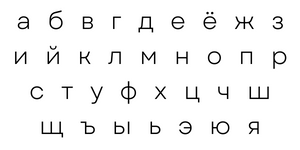Slavic languages: which are the easiest, which are the hardest?
Whenever you think of Slavic languages, the first language that comes to mind is probably Russian. That’s because it’s the most widely spoken of all Slavic languages. But did you know that there are more than 10 different Slavic languages?
So, if you have ever considered learning a Slavic language, there are many options to choose from. However, it’s universally acknowledged that Slavic languages don’t belong to the easiest languages to learn, especially for English speakers.
Although Slavic languages are similar in terms of grammar, vocabulary, and phonetics, they are all entirely different from English. This makes them especially hard to learn for English speakers.
We'll start by looking at the characteristics of Slavic languages, then we'll look at:
A Brief Introduction to Slavic Languages
Slavic languages are spoken by nearly 300 million people around the world and cover a vast geographical area. From Russia to Poland, you can find people speaking Slavic languages.
So, what are the origins of the Slavic languages, and what are they?
To begin with, the Slavic languages derive from the Proto-Slavic language - their immediate parent language. Over time, the Proto-Slavic language separated into three branches: East Slavic, West Slavic, and South Slavic.
The term "Slavic" is a catch-all adjective for all languages in the group, and it is typically used to describe anything common to all or most Slavic languages.
The largest group within the Slavic family, by the number of speakers, are the East Slavic languages. Russian, Ukrainian, and Belorussian belong to this group.
The West Slavic languages include Polish, Czech, and Slovak.
Finally, the South Slavic languages are Bulgarian and Serbo-Croatian (Serbian and Croatian can be considered as two separate languages or as one language with two different dialects).
Each Slavic language developed under the influence of others, which makes them all slightly similar. But the more each language continued to evolve, the more it differed from its initial state. For this reason, it is worth learning all Slavic languages - each of them is unique.
What Do Slavic Languages Have in Common?
The three Slavic language groups are mutually unintelligible. In other words, a native speaker of an East Slavic language is unlikely to understand a West Slavic language.
In fact, the further the languages are classified from each other, the fewer similarities they have. Each language has a different level of correlation with other languages, even in the same group.
When it comes to the similarities between the Slavic languages, their kinship lies in the fact that they all derive from a common “ancestor” – the Proto-Slavic language. Here are the features that the Slavic languages have in common:
1. Grammar
The general and common grammatical features of all Slavic languages are primarily inflectional morphology with multiple morphemes. Most Slavic languages implement an extensive system of cases in which the endings of nouns (declination), adjectives, and prepositions change depending on the case.
Slavic languages make a distinction between three main grammatical genders (male, female, neuter), as well as the division of verbs into perfective and imperfective.
2. Vocabulary
The Slavic languages have many words in common, although some of the similarities can be confusing. Where individual Slavic languages border with each other, these boundaries are usually blurred – there are broad stripes of transitional dialects and areas of the intermingling of phenomena characteristic of both neighboring languages (for example, in Czech and Slovak).
3. Phonetics
The main phonetic similarity between all Slavic languages is the presence of phonemic palatalization, known as softening.
The Slavic languages are also known for their complicated consonant clusters. What’s more, it’s important to notice that Slavic languages use not one but two main alphabets - Latin and Cyrillic.
Moreover, each language has its own letters that have developed to denote particular phonetic phenomena.
Slavic Languages: Easy or Hard?
Many linguists consider Slavic languages to be the most challenging languages to learn for native English speakers.
Indeed, Slavic languages (unlike Romance languages) often appear on the lists of the hardest languages to learn.
The Foreign Service Institute classifies most Slavic languages as Category IV languages - which means that they require 44 weeks or 1100 hours of study to reach a conversational level.
In order to become fully proficient in any Slavic language, you need to invest years of study. This is because the grammar rules are highly complex, and you need to memorize many grammatical exceptions and vocabulary words. Even then, it's very likely that you will make mistakes in pronunciation and word order.
So, what are the easiest and the hardest Slavic languages to learn for English speakers?
The Easiest Slavic Languages to Learn for English Speakers
Although not easy at all, Bulgarian and Macedonian are often considered the easiest Slavic languages to learn for English speakers.
That’s because their grammatical structure is slightly less complex than in other Slavic languages, mainly because they don’t use cases. They also have a relatively easy noun system.
Bulgarian
Bulgarian is a South Slavic language spoken mainly in Bulgaria. There are also Bulgarian speakers in some of the neighboring countries.
In terms of grammar, the main feature that makes this language easier to learn than other Slavic languages is the lack of noun cases.
Unlike other Slavic languages, Bulgarian has no case system. As in English, Bulgarian has a standard set of pronouns, places the adjectives in front of the nouns, and is consistent in gender and number. Prepositions behave similarly to English, and questions have many question words that are simple enough to remember.
The Bulgarian writing system uses a Cyrillic alphabet, similar to the Russian alphabet but with some distinct differences.
There are 30 letters in the Bulgarian Cyrillic alphabet. The script is almost entirely phonetic, which means that once you pick up the pronunciation of the letters, you can quickly begin reading fluently.
Macedonian
Macedonian is the language spoken in Macedonia, which used to be part of the former Yugoslavia. Much of Macedonian vocabulary is similar to Serbian and Bulgarian, and it uses a Cyrillic alphabet, just like Bulgarian.
Part of what makes it one of the easiest Slavic languages to learn for English speakers is its simple vocabulary, which makes it pretty simple to speak and comprehend.
In terms of grammar, a lexical and grammatical similarity exists between Bulgarian and Macedonian. The Macedonian language lost the traditional (Slavic) grammatical cases during its development, and it became an analytic language.
Because Macedonian doesn’t have a complex case system like other Slavic languages, it’s considered one of the easiest Slavic languages to learn.
What’s more, the Macedonian verb system is slightly different from other Slavic languages, as it doesn’t use the infinitive form of verbs. So, verbs are usually given in the first person of the singular form.
Although both Bulgarian and Macedonian have been recognized Category IV languages in terms of difficulty for English speakers, they are relatively easy to learn compared to other Slavic languages. However, learning them can be more difficult since there are very scarce learning resources available for Bulgarian and Macedonian online.
Russian
Russian is the most widely spoken Slavic language, with 155 million native Russian speakers. Russian is the most-spoken native language in Europe and the 8th most-spoken language in the world. It is also the most geographically widespread language.
Although Russian is classified as one of the most difficult languages to learn by the Foreign Service Institute, many things make Russian one of the easiest Slavic languages to learn for foreigners. First of all, there are many resources available online to learn Russian, and it’s also taught in many language schools.
The Russian language uses the Cyrillic alphabet, which can be challenging for English speakers to learn. But once you do, you can pronounce almost all Russian words quite accurately. Plus, it doesn’t even take that long to get used to the new alphabet, as it’s pretty straightforward!
The Russian alphabet
In terms of grammar, Russian is more complex than English. It has six declension cases, which don’t exist in English and can be challenging for English speakers to comprehend.
Also, like other Slavic languages, Russian distinguishes three genders: male, female, and neuter. However, there’s no way of accurately guessing the gender of the noun. This means that you just have to memorize the nouns with their corresponding gender.
However, Russian has fewer tenses than English. It doesn’t bother with the difference between “I was running,” “I had been running,” etc. - instead, Russians affix endings and use inflection to indicate the same kinds of tenses and actions. This makes Russian actually far easier to learn than many have been led to believe!
The Hardest Slavic Languages to Learn for English Speakers
Czech and Polish are often considered the most difficult Slavic languages to learn for English speakers. That’s mainly due to their complex grammatical structure and difficult pronunciation.
Let’s take a look at them in more detail.
Czech
Estimated to be spoken by over 10 million people, Czech is the official language of the Czech Republic. It's highly similar to Slovak - Czech and Slovak are mutually intelligible - and slightly similar to Polish.
Although the Czech language uses the Latin alphabet and its words are pronounced the way they are written, it’s one of the most difficult Slavic languages to learn. That’s because Czech is a highly complex language. It has complex grammar rules, mainly due to numerous noun declensions.
In contrast to English, Czech is a synthetic language. It means that, in Czech, different grammatical aspects are condensed into one word by changing its structure. This can be done by adding a prefix or suffix or modifying the word. Its synthetic nature gives rise to a complex system of declension and conjugation.
These complex grammatical structures that don’t exist in the English language, combined with a challenging pronunciation, make Czech one of the hardest Slavic languages to learn for English speakers.
For more on the Czech language, see this comparison of Czech with Russian and German.
Polish
Polish is closely related to Czech and to Slovak. It’s one of the official languages of the European Union, spoken by over 40 million people, mainly in Poland.
Like Czech, Polish uses the Latin alphabet with additional letters modified to reflect specific sounds in the Polish language, such as nasalized vowels (spelled ę and ą).
What’s more, Polish words often contain many consonants in a row, which makes them hard to pronounce for English speakers (and non-Slavic speakers in general).
For example:
chrząszcz or
brzęczeć
To listen to more examples of Polish pronunciation, refer to the audio recordings provided in the following articles:
When it comes to grammar, Polish is quite complex. It has 7 declension cases for nouns, adjectives, and pronouns. It also has a complicated verb conjugation system, which can be pretty confusing for English speakers.
On the other hand, Polish doesn’t distinguish as many tenses as English does - there’s only past, present, and future combined with a perfective and imperfective verb aspect.
Plus, Polish often likes to break its own grammatical rules, which makes it slightly unpredictable while learning.
Polish is undoubtedly one of the hardest languages to learn for English speakers due to its complex grammar and pronunciation.
ConclusionIf you’re considering learning a Slavic language, it’s important to remember that its difficulty will largely depend on many factors, such as:
- The grammar, pronunciation, and general structure of a language
- The alphabet (as mentioned in the article, some Slavic languages use the Cyrillic alphabet, which means more things to learn). See for instance this comparison of Croatian and Russian.
- Whether you already speak or are familiar with any other Slavic language
- Availability of learning resources online
- Individual ability to learn languages
And while these are important factors to consider, remember that the difficulty level of a language should not be your only reason for choosing a language to learn.
